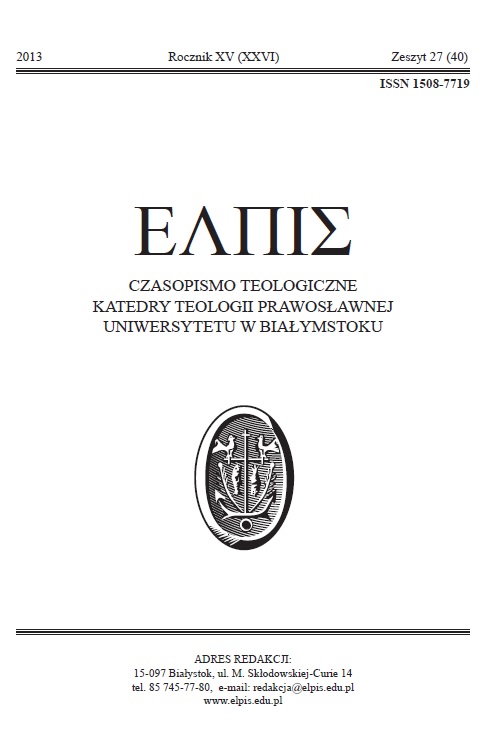Historia chrześcijańskiej rachuby lat
DOI:
https://doi.org/10.15290/elpis.2013.15.14Słowa kluczowe:
kalendarz, rachuba lat, prawosławny kalendarz liturgiczny, kalendarze, juliański, gregoriański, neojuliański, próba reformy kalendarzaAbstrakt
The issue of the liturgical calendar of the Orthodox Church is one of the topics currently being discussed. Using thejulian or neojulian liturgical calendar raises in faithful not only dilemmas or doubts, but also confusion, as shown by discussions
on some social networking sites.
The author of this text wants to bring closer reader to the problems of this issue and clarify the liturgical and calendar
duality. This paper also develops such topics as the history of the christian calendar, reckoning of years, creation of calendars:
julian, gregorian and neojulian, as well as problems arising from using two calendars within one local Church.
This work shows that the use of one kind or another calendar is not a violation of dogma, but may lead to a breach of
a rule, established at the time of the Ecumenical Councils. You should be aware that the julian calendar was not strictly
a calendar set up for the liturgical aims, but it was adapted for formulating the liturgical order.
Experience of the liturgical life shows that, even though type of calendar is not a dogma, entering neojulian calendar
permanently divided some local Orthodox communities. Introduction of neojulian calendar was not necessary, and the
events at the beginning of the twentieth century is warning to refrain from taking radical action to reform liturgical life.
Certainly this is a difficult issue that requires common action under the providence of Grace of the Holy Spirit.
Downloads
Pobrania
Opublikowane
Jak cytować
Numer
Dział
Licencja
Prawa autorskie (c) 2014 Elpis

Utwór dostępny jest na licencji Creative Commons Uznanie autorstwa – Użycie niekomercyjne – Na tych samych warunkach 4.0 Międzynarodowe.
Szczegółowe warunki licencji CC BY-SA (Uznanie autorstwa - Na tych samych warunkach) dostępne jest na stronie Creative Commons - link.
Autor musi wypełnić i przesłać na adres redakcji (elpis@uwb.edu.pl) uzupełnioną i podpisaną umowę autorską wraz z oświadczeniem o oryginalności artykułu i wkładzie autora w powstanie artykułu. Plik umowy do pobrania: TUTAJ









